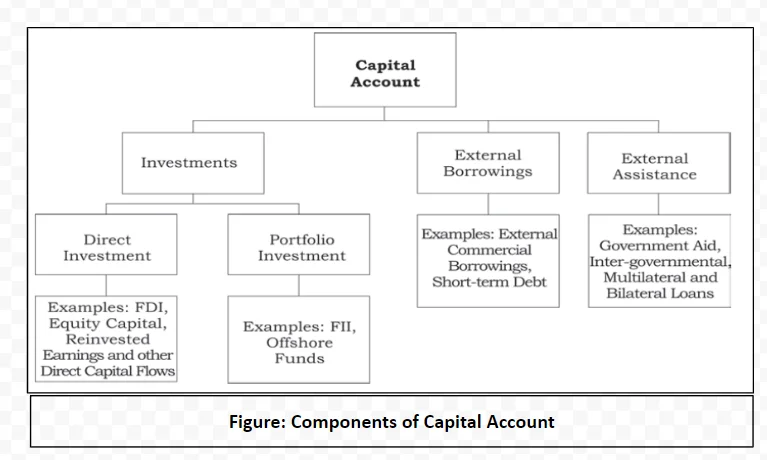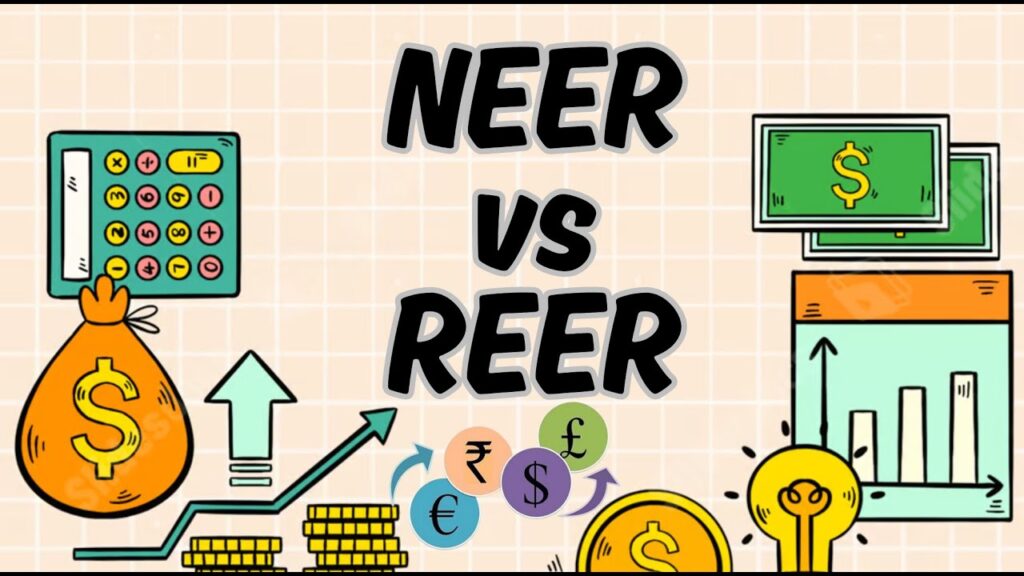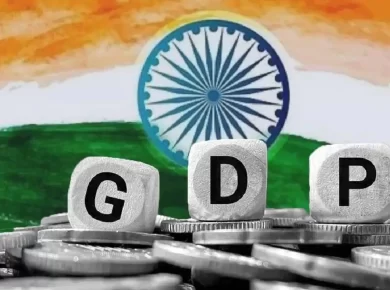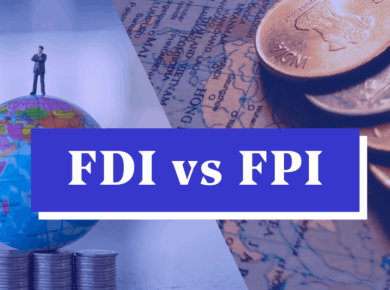Balance of Payment – Current Account & Capital account
Points to Ponder in This Article – An extremely important article from prelims point of view. Understand what constitutes balance of payments, current account & capital account.
Balance of Payment
Balance of Payment is systematic record of overall economic transaction during specific time period
- Consists of Current account payments & Capital account payments
- World’s net Balance of Payment is always 0

Systematic Record
|
Economic Transactions
|
Current Account
Balance of Trade / Visible
- Also known as balance on merchandising goods
- Records all transactions of foreign currencies on account of export & import of goods only
- BOT is always deficit in India means import >> export
- Means insufficiencies of foreign currency through export to pay for critical imports
Balance of Invisible
- Records all transactions of foreign currencies resulting out of export & import of services such as banking, insurance, software, consultancy etc.
- Also includes the following:
- Inward & outward tourism
- Inward & outward education
- Inward & outward medical treatments
- Inward & outward Remittances : Indians settled abroad (Indian diaspora) send money in foreign currency to India & similarly for foreigners in India
- Profit & Interest on ReFI investments outgoing & similarly incoming interest on Indian investors investing in foreign markets
Points to ponder
- Net effect of BOT + BOI leads to Current account surplus (CAS) or current account deficit (CAD)
- Generally, BOP is negative in India & if BOI is over and above BOT than CAS otherwise CAD
- CAD + Fiscal deficit = Twin Deficit
Capital Account
- Foreign investment in India (ReFI (FDI, FII), ADR, Direct purchase of land or assets)
- External commercial borrowing (IMF, WB, ADB etc.), External assistance & Grants etc.
- Indian Diaspora maintain deposits in foreign currency in India known as NRI deposits
- Overall BOP cannot tell the health of an economy, weather there is CAD or CAS but what is important is the manner in which inflow & outflow are matched
- As CAD can be fulfilled by ECB (external borrowings) / RBI (internal borrowings) in capital account of BOP
- The true picture can be seen from current account of BOP

BOP Crisis 1992
- BOP crisis when capital account surplus are insufficient to finance current account deficit
- Gulf war period > Oil price shoot
- Current account became more negative than positive capital account
- Lead to negative BOP > Rupee value fell > Bad for Indian importers
- RBI sold its own dollars to make BOP Zero
- But RBI did not have enough dollars to make BOP zero
- India pledged 65 tonnes of gold from IMF to make BOP Zero
Steps to avoid BOP crisis
- CAD should be kept low (Or Positive) e.g., Germany
- Capital account should be kept largely surplus (attract investment + LPG reforms)
- Central Bank must have large FOREX reserve e.g., China
Forex Reserve Consists of –
- Foreign currency
- Gold
- SDR
- Reverse Tansche
Reverse Tansche – A certain proportion of a member country’s quota is specified as its reserve tranche. The member country can access its reserve tranche funds at its discretion and is not under an immediate obligation to repay those funds to the IMF. Member nation reserve tranches are typically 25% of the member’s quota.
Also read: Financial Institutions in India
Exchange Rates Evolution in India
Fixed Exchange Rate
- Upto March 1992 in India
- 1$ was approx. equal to Rs. 40
- Authorized dealers under FEMA > If enough dollars not available, then go to RBI
- If large number of dollar required by people due to any geopolitical or any other factor –
- Devaluation of currency to balance demand of dollar
- Devaluation of national currency increases exports
Floating exchange rate
- RBI doesn’t intervene to control exchange rate
- Free market supply-demand came into play to decide the exchange rates
- But too much volatility in exchange rate > Hence in real-life countries use “Managed floating”.
Managed floating Exchange Regime
- RBI interfere to manage volatility in floating exchange regime
- To stop depreciation of rupee, RBI should sell dollars from its forex reserve
- To stop appreciation of rupee, RBI should purchase dollars from market
NEER vs REER
| Nominal Effective Exchange Rate (NEER) | Real Effective Exchange Rate (REER) |
| The weighted average of bilateral nominal exchange rates of home currency in terms of foreign currencies | Weighted average of nominal exchange rates, adjusted for inflation |

- NEER & REER > Weighed Geometric mean with foreign countries currencies – 6 or 36
- NEER & REER > Calculated by CSO & RBI
- REER is an indicator of trade competitiveness.
- REER > 100 means national currency is overvalued
- REER < 100 means national currency is undervalued
- Undervalued currency > Good for exports e.g. Chinese Yuan
Convertibility of accounts
Why restrictions on convertibility?
- Central bank cannot ”manage” floating exchange rate regime all the time
- Otherwise Forex-reserve will get empty
- Hence quantitative restrictions on rupee-conversion to foreign currency
Full Current Account Convertibility
- Indian Rupee is fully convertible into another foreign currency
- For current account transactions and vice-versa
- Though Current account in India is fully convertible but still some restrictions from FEMA viz.
- Not convertible for betting, gambling, prohibited items
- Travel to Nepal, Bhutan > Can carry Max. $ 10 k || Max. Rs. 100 denomination
- Travel to other countries > Can carry Max. $25 k per visit (beyond that need RBI permission)
- For Education, Medical treatment, Employment purpose > limit is 1 lakh $
- Gift sending > limit Rs. 5 lakh worth
Capital account convertibility
- Indian Rupee is not fully convertible on Capital Account
- Only partial convertibility
Restrictions under FEMA
- ECB
- Quota > 1 Billion $ Entire Aviation sector
- Individual company > 300 million $
- Maturity > 3 years minimum + Approval from RBI
- FDI, FII restrictions
- 100% for Investment liberty in Bhutan
- Everywhere else > $75 k investment per year by individuals e.g. buying shares, opening foreign bank accounts
- Financial Action Task Force (FATF) > “Non co-operative countries” [Iran, N Korea] – No investing in these countries
Liberalized remittance scheme (2004) – Indian residents may spend $2.5 lakh dollars per year per person abroad apart from FEMA limit







2 comments
Capital Account –> NRI Account me Remittances & Gift likha hai kitna bada baklol IAS ka class khol diya hai…
usme bas NRI deposit hoga…
Remittances current account me ata hai